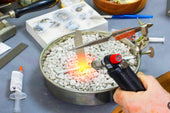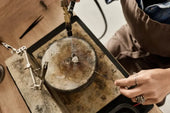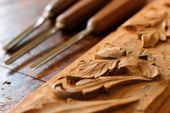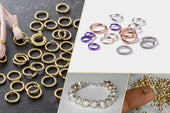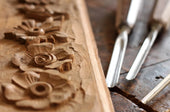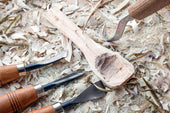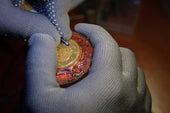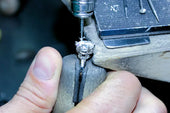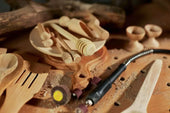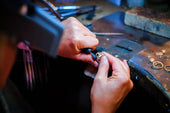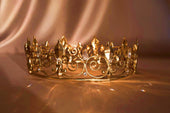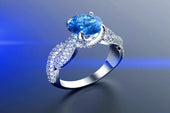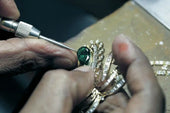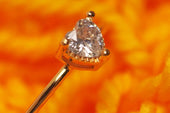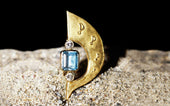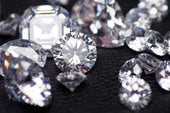
Jewelry has always been popular with many people, especially jewelry made of gemstones is especially beautiful and expensive. Although we are all familiar enough with jewelry made of gemstones, we do not understand why the price of gemstone jewelry has been very expensive and will not have a significant drop in price. In fact, it has to do with how gemstones are created. From the moment the gemstone mine was discovered, it was already born, only the gemstone was discovered and appeared in front of the public has a long and complicated process. This article will unravel the mystery of this process and reveal the complete birth of gemstones.
1. Mining and cleaning
Gemstone mines are mostly mined by hand and are usually located on the banks near the river. The miners can only use shovels and other simple digging tools to do this by hand, and if they use a digger, they will damage the gemstone mine and cause damage to the gemstones. The small stones are then taken out of the mine and placed in a storage bucket and cleaned with water or in a nearby river. After the cleaning process, professionals are required to select the raw stones that contain gemstones from among the small stones.
2. Sorting
Most of the raw stones are rough and irregularly shaped, and it takes a lot of labor and time for the staff to select the beautiful stones that meet the criteria from the countless raw stones. For example, pure sapphire, which is currently very popular on the market. On average, only about 1 carat of raw sapphire can be selected from every 400 tons of sapphire ore. The selected raw sapphire needs to undergo a second precise screening process to select one pure sapphire out of every 1,000 raw sapphires that has reached the gemstone grade in terms of color, clarity, quality and other aspects.

3. Design drawings
The design of a gemstone consists of four main aspects: color, weight, flaws and proportions. First, the staff needs to make a precise examination of the color, shape, nature and distribution of internal flaws, and the number and distribution of locks of the raw gemstone using a stereo microscope, which provides a detailed view of the structure of the gemstone and accurately detects any impurities that may be present in the stone. At the end of the examination, the shape of the gemstone and the proportions of the cut are designed according to the results of the examination.

4. Engraving the wax model
Once the design drawings have been completed, it is not possible to start working with the gemstone straight away, as mistakes in the process may lead directly to the loss of the precious gemstone. In order to ensure the accuracy of the design, it is necessary to mold the gemstone with soft or hard wax according to the design drawings. The wax mold of the gemstone gives a concrete representation of the volume of the gemstone itself. This not only simulates the cut on the model, but also digs out the holes needed to set the gemstone. The model is then used to test the position of the gemstone for the best possible setting position.
5. Cutting and engraving
Untouched gemstones do not have the slightest luster. To bring out the luster and color of a gemstone, it requires precise and accurate design and skillful carving by a trained master. An experienced carvers will calculate the refractive index and color calculation of the gemstone based on its initial state to find the optimal cutting point. Precise cutting and carving work is carried out using specialized engraving tools to ensure that the gemstone radiates the most perfect light.

6. Hand Setting
The method of setting varies from stone to stone, and regardless of the method, the setting is done by hand. Therefore, this is an extremely time-consuming process, the jeweler needs to use a engraved ball vise to fix the position of the gemstone, and then use a stereo microscope to determine where the gemstone needs to be set, with full attention throughout the process. This is because the slightest mistake in the setting process may damage these precious stones.

7. Polishing
Before and after the gemstone setting process, there are several polishing and buffing procedures to make the set gemstone emit the best luster and brightness. Finally, the perfect finished product is also plated with rhodium to prevent oxidation so that the jewelry always radiates brilliance.
8. Quality Inspection
After the gemstone treatment is completed, there are two quality inspection processes, which are divided into initial inspection and re-inspection. In order to ensure that the quality of the gemstones is up to standard, both processes are carried out by experienced and professional jewelry appraisers.

9. Completion
It takes millions to billions of years for gemstones to form, and its complete birth process from the mining of the raw stone to the processing of the finished product has to go through many tests. Eventually, when you see a gemstone emitting brilliant light in the showcase, people can hardly imagine what kind of hardship is behind it.
Final Thoughts
In order to present a flawless and pure gemstone in front of people, the whole process of gemstone birth is full of various complicated and tedious manual processing work. Understanding the birth process of gemstones allows people to further deepen their understanding of gemstones and know more useful knowledge. It is helpful for people who want to buy gemstone jewelry, learn gemstone jewelry making, and learn jewelry carving.


